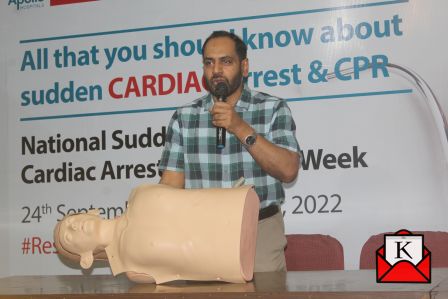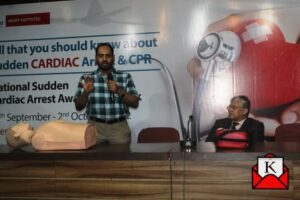How To Revive Patients With Sudden Cardiac Arrests?


Apollo Multispeciality Hospitals in Kolkata raised awareness about sudden cardiac arrest in order to empower locals to save lives. A condition known as sudden cardiac arrest causes the heart’s electrical circuits to malfunction, causing the heart to cease beating unexpectedly. People who have abrupt cardiac arrest rapidly lose consciousness, and this can happen to anyone, including healthy and physically fit individuals.
The symptoms of a heart attack brought on by blockages in the heart arteries include chest pain, shortness of breath, discomfort, nausea, and excessive perspiration. Even if there is still time to get to a hospital, he or she can communicate the need to be taken there. However, abrupt cardiac arrest—as the name implies—occurs very suddenly, and the patient typically exhibits no symptoms. Therefore, the only way others around him may save his life is by making an effort to awaken him.
Dr. Aftab Khan, Consultant Cardiologist and Electro Physiologist, Apollo Multispecialty Hospitals Kolkata, was present for the event. “When the heart stops suddenly, the brain stops getting blood, and if it doesn’t get blood for longer than three minutes, it can slip into a permanently damaged state known as coma, and within ten minutes, this patient can die. It’s critical that those close to the patient revive him because there isn’t enough time to get a doctor or get to a hospital” said Dr. Aftab Khan.
The brain and other organs can continue to get oxygen-rich blood thanks to CPR until emergency medical care can return the heart to a normal rhythm. The right steps to remember when administering CPR are CAB- compressions, airway opening, and rescue breathing.
Process of CPR:
The patient must be made to lie on his or her back on a firm surface and using both hands, the patient’s chest must be pressed down quickly and forcefully in a certain manner. Compressions are the most crucial CPR procedure. The other hand should be placed on top of the first hand, with the lower palm (heel) of the hand being placed on the patient’s chest, between the nipples. The technique is to push straight down on (compress) the chest for no more than 2.4 inches while keeping elbows straight and shoulders above the palms (6 centimeters). It’s imperative to perform compressions while using your complete body weight, not just your arms.
After 30 compressions, a CPR expert can also perform rescue breathing. With one hand, gently push the chin forward to open the airway while placing the palms on the person’s forehead to gently tilt the head back. For mouth-to-mouth breathing, the nostrils should be closed after opening the airway.
